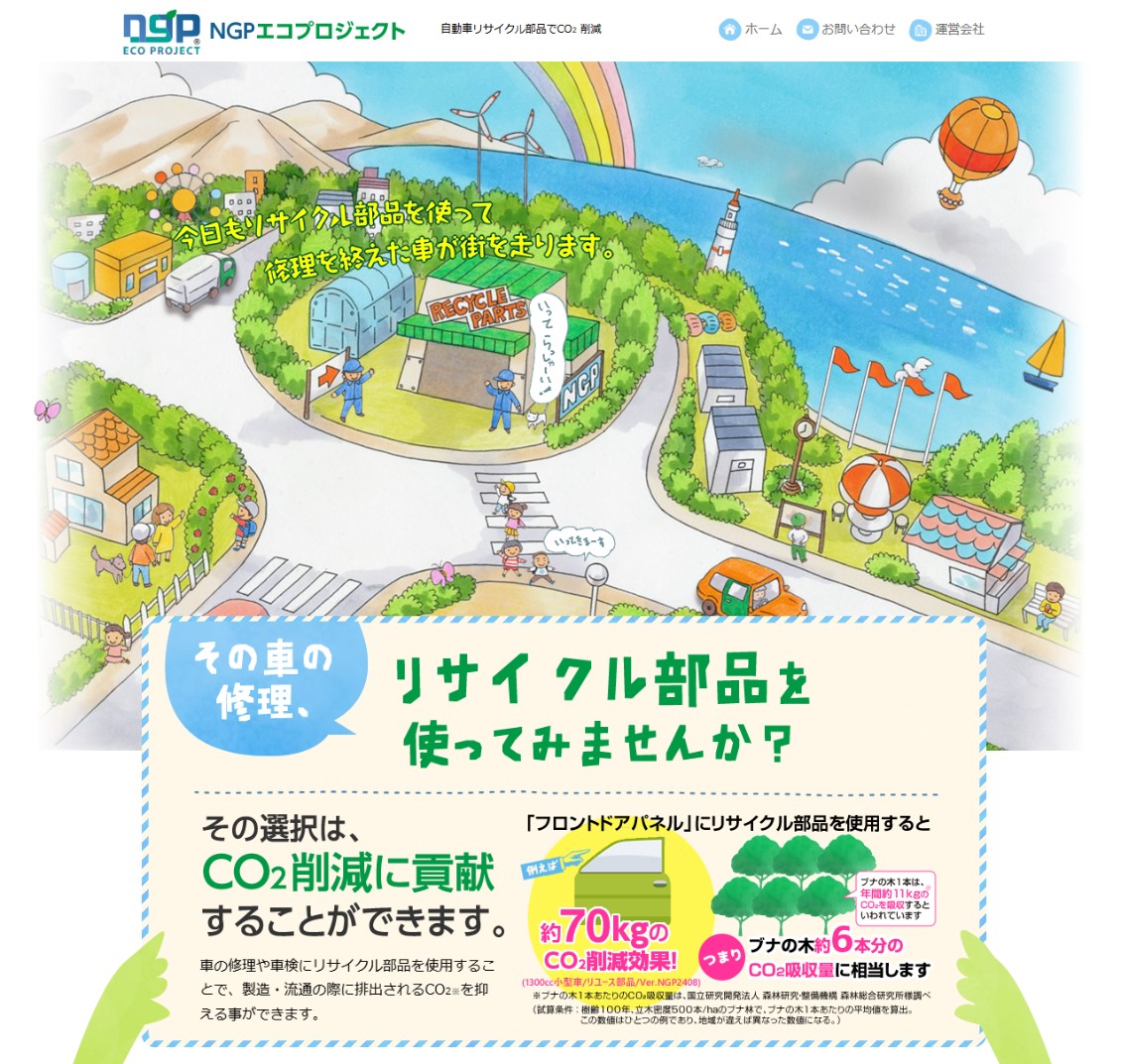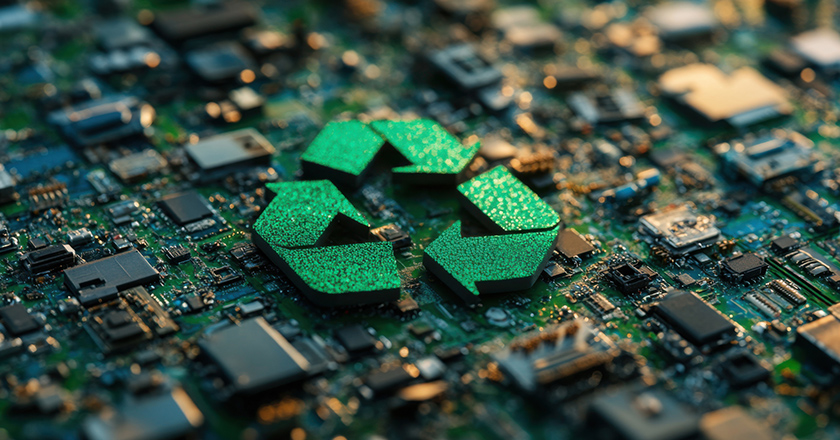As electronic waste increases, the “right to repair” movement is spreading worldwide
The concept of LCA (life cycle assessment), which measures the environmental impact across a product’s entire lifecycle, first emerged in the 1970s. In the 1990s, a method to quantitatively assess the environmental impact generated throughout the entire lifecycle, including the procurement of products and services, production, distribution, consumption, disposal, and recycling, was established as an ISO international standard.
One of the most notable current challenges in reducing the environmental impact is the increase in electronic waste (e-waste) caused by the shortening lifespan of smartphones and home appliances. As technology rapidly advances and new products are continually introduced to the market, consumers tend to find newer products more attractive and are inclined to replace their existing ones. In recent years, smartphones with easily replaceable batteries have been decreasing. In most cases, the battery must be replaced by the manufacturer, and OS support ends after a certain period, often forcing users to physically replace their devices. As a result, the replacement cycle has shortened, and e-waste is increasing.
In 2022, as much as 58 million tons of e-waste were generated worldwide. Currently, much of this is exported to developing countries and discarded without proper treatment. E-waste includes precious metals such as gold, silver, copper, palladium, and rare earths, and the total annual value is estimated to be several trillion yen. However, only about 20% of it is actually recycled, and it is also a major problem that much of that is not properly recycled. Improper extraction can release hazardous substances, pollute soil and groundwater, and increase health risks for local communities.
To address these issues, in February 2024, the European Parliament and the European Council agreed on a new bill regarding “Right to Repair”. This bill requires companies to create sustainable products that enhance the repairability and recyclability of products, so that consumers can more easily repair or reuse products that they purchased. Companies are obliged to design products that can be used for multiple generations, instead of being disposed of when they are worn out, disclose repair manuals, and stock replacement parts for a fixed period.
In France, it is already mandatory to indicate on products how repairable they are. In the U.S., “right to repair” laws have been established in some states. This trend is likely to continue spreading. In Japan, under the Home Appliance Recycling Law (Act on Recycling of Specified Kinds of Home Appliances), the collection and recycling of home appliances is mandatory. Discussions on promoting product designs that are easier to repair are progressing, and future developments are anticipated.
What kind of framework and procedure are needed to design environmentally conscious products? What does that process involve?
It is said that 70-80% of the environmental impact across a product’s lifecycle is determined at the design stage. To ensure repairability, a product must be designed with repairability from the early development stage. Material selection, ingenuity in the production process, and anticipation of recyclability and upgradability also need to be considered. In addition to efficiency, it is becoming increasingly important to design with the entire lifecycle in mind.
To avoid waste at the end of a product’s use, recyclable materials should be selected for parts from the early stage of development. It is also important that parts are designed from the outset to be easily disassembled, replaced, and repaired. That is, during the design stage, which parts should be grouped together as a unit (= module) needs to be examined.
For example, smartphone batteries tend to wear out quickly. Therefore, creative modular design that allows batteries to be easily removed instead of being bundled with other parts is necessary. How to modularize them differs even in the case of the same products.
When module configurations change, supply chains also change, which affects CO2 emissions. If transportation distances are shorter, CO2 emissions can be lowered. CO2 emissions also vary depending on transportation methods such as rail or truck. Depending on the country and location of the manufacturer from which parts are procured, the environmental impact changes. Therefore, selecting an appropriate supply chain is also important.
Not only transportation distance but also reducing product weight significantly influences the lowering of transportation energy. Lighter weight also has an impact during use. For example, lighter vehicle bodies improve fuel efficiency. For this reason, manufacturers constantly strive to reduce weight during the design process. For instance, they use aluminum or carbon fiber in frames instead of steel that was used in the past.
At our laboratory, we are examining what we can do to reduce the environmental impact from the perspective of product design. What kind of modular structure should be adopted and which supply chain should be selected to reduce CO2 emissions? We are visualizing the relation between product structure and supply chain, running the numbers on product cases, and verifying whether they were effective or not. Moreover, in the collaborative research with NGP (Japan Automobile Recycling Cooperative), we fully disassemble cars from various manufacturers, and disclose information such as how much CO2 emissions can be reduced by certain types of parts when recycled parts are used for engine repairs.

(Japan Automobile Recycling Cooperative) (Japanese text only)
When designing, we also need to consider factors that may conflict with efforts to reduce CO2 emissions, including cost and performance. Given that the manufacturer is ultimately responsible for making decisions, our research aims to provide decision-making support. We propose a process that is as versatile as possible and repeat verifications by increasing applicable cases, and then see whether it is applicable to specific products or not, and if not, which methods would be feasible.
One thing we wish to further work on is product upgrading. If functions and parts that cause the decrease of market value can be upgraded like software using new technologies, even if a product is used for a long time, its life expectancy will be prolonged, and as a result, a new value can be generated. The concept of upgradeable design for multi-generational use already exists. However, which framework and process should be used for implementing it is not yet verified. Despite many uncertainties and the difficulty of design through predicting future trends, we are eager to move forward with this approach.
Environmentally conscious product design leads to building market competitiveness
We are also exploring ways to create a mechanism to promote environmentally conscious consumer behaviors in our collaborative research. Basically, environmentally conscious product development cannot be achieved without changing consumer behavior. Japanese consumers have a national character to “prefer new things” compared to Europeans and Americans. When a part of a product is broken, it is common to repair it with a new part or replace the product with a newly purchased product. Even if it is repairable with a recycled part, they relatively tend to prefer using new parts or products.
How can the benefits of reducing the environmental impact be conveyed to consumers? What kind of information should be offered for consumers to be aware of environmentally conscious behaviors? In our collaborative research, for example, we are experimenting with stating cost and CO2 emissions for new parts, reused parts, and rebuilt (overhauled) parts in car repair quotes. In the future, we will present information on increases in overall performance, including product value, environmental friendliness, economy for consumers, depending on how much they drive, how long they keep driving, and which parts they select. Then we would like to verify which conditions will make consumers choose recycled parts instead of new ones.
If consumers themselves start selecting environmentally conscious behaviors, companies’ response to the environment may also further accelerate. In Europe more consumers are selecting environmentally conscious products, and this trend is growing stronger owing to the impact of regulations and taxation policies. Moreover, environmentally friendly designing leads to exploration of new technology, which will increase the possibility to create new market opportunities. Nowadays there are investment strategies to select issues by evaluating their corporate environmental efforts.
While many consumers seek a balance between cost and performance, and their preferences vary by country and market, especially in developed countries, the global trend to seek products with a focus on sustainability is rising year by year. Designing products to meet these needs should not only extend product lifetime, improve recyclability, and reduce cost, but also offer a clue to generate a competitive edge in the marketplace.
* The information contained herein is current as of November 2024.
* The contents of articles on Meiji.net are based on the personal ideas and opinions of the author and do not indicate the official opinion of Meiji University.
* I work to achieve SDGs related to the educational and research themes that I am currently engaged in.
Information noted in the articles and videos, such as positions and affiliations, are current at the time of production.

